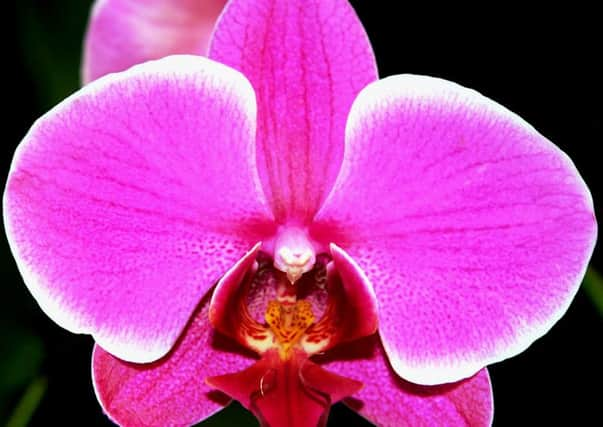Orchids, a perfect Mother’s Day treat


So, expect many mums to wake up to the sight of a cyclamen or perhaps even an orchid because the latter, once seen as something too exotic and difficult to grow in the average English home, is now recognised as a particularly attractive and relatively easy-to-care-for houseplant.
That’s why moth orchids have become something of a rage – they are among the least expensive and longest-blooming orchids on offer, so there are likely to be a lot appearing in homes on Sunday, March 30.
Advertisement
Hide AdAdvertisement
Hide AdPhalaenopsis are strikingly attractive (they come in many different sizes and colours, including striped, spotted, mottled, blotched plain white or a combination), and the fact that a flower spike can last for months has helped increase their popularity.
But as with all plants – both indoors and out – there has to be some give and take. Which means that to cultivate a happy orchid moth, its owner has to provide it with the conditions to thrive.
A moth orchid doesn’t like a heavy compost but prefers its roots to dry out between waterings. So a well-aerated, free-draining compost is best.
Water well from the top, taking care to keep the centre of the plant dry and then leave it to drain. Don’t let a plant stand in excess water and if the pot is in another container, make sure it isn’t standing in trapped water.Rain water is recommended but distilled water can be used instead as long as you remember to add fertiliser. Feed your plant regularly with orchid fertiliser when you water. Every fourth watering, leave out the fertiliser to allow any build-up of salts to be washed from the compost.
Advertisement
Hide AdAdvertisement
Hide AdDon’t reduce the night temperature below 12C (55F). Higher day-time temperatures are no problem as long as your plant is in a shady place and humidity and airflow are good. Being accustomed to the dappled light of the forest, moth orchids dislike direct sunlight, especially through glass. Indirect sunlight is ideal.
When the flowers die, cut back stem just above a node, leaving 30cm (12ins) or so of stem.
Occasionally a leaf may go yellow and drop off. Don’t worry, it’s quite normal. If your orchid should suffer serious leaf loss, stop watering and feeding for four weeks. This can encourage new roots to be produced. Re-potting is usually carried out every other year between now and June.